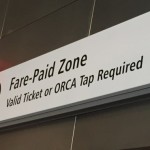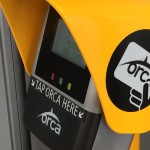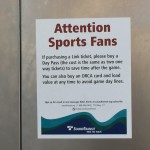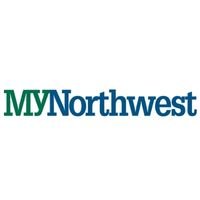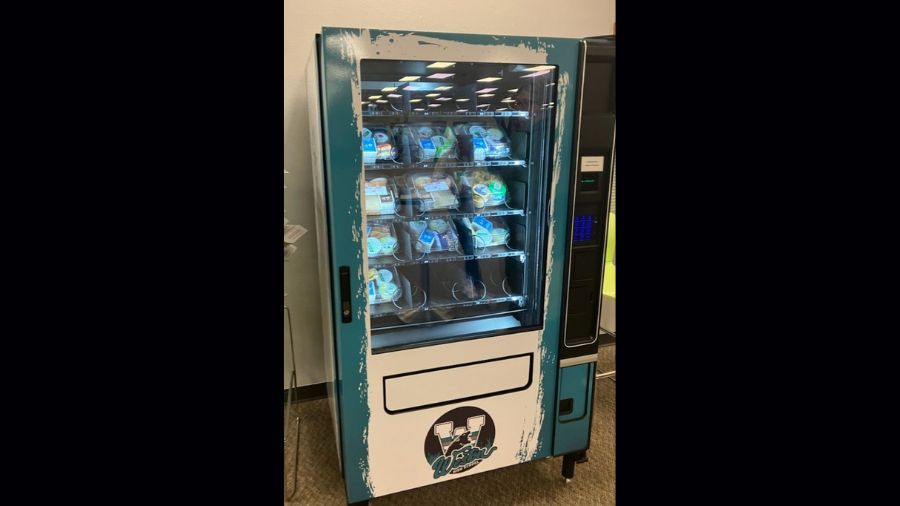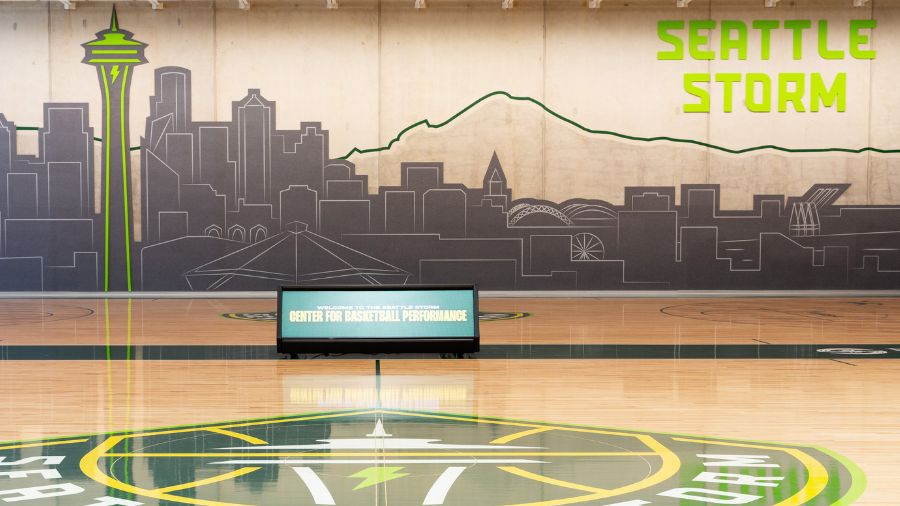Sound Transit light rail loses more than $550K annually to fare jumpers
Oct 26, 2016, 6:00 AM | Updated: Oct 27, 2016, 9:12 am

Sound Transit says the Proof-of-payment method on the Link light rail system has been effective. (MyNorthwest)
(MyNorthwest)
If you’ve ever boarded Sound Transit’s Link Light Rail, odds are you’ve sat through a trip without being questioned by anyone about your ticket. That’s because the goal of Sound Transit’s enforcement system is to check 10 percent of riders for proof of payment. The end result is that an estimated 3-5 percent of riders sneak on for rides, which puts the net annual loss at hundreds of thousands of dollars, and that number will increase as the system grows.
Find out who KIRO Radio hosts will be voting for in this election
For Sound Transit, though, those losses are the cost of doing business in the public transit world and is still better than the alternative.
“What the industry has found is that this is an efficient way to collect fares and keep everybody safe without having to pay someone to be at the station 20 hours a day at four different locations, keeping an eye out for someone walking around the turnstiles,” said Sound Transit spokesperson Bruce Gray.
As voters consider the $54 billion South Transit 3 measure that would expand light rail over the next 25 years, it’s worth looking at how the current system is paying off and whether the system is being efficient with taxpayer money. The Seattle Times editorial board suggested voters reject ST3 and demand a better plan, saying the project has unclear benefits and little accountability, advising voters to “demand a better plan” while ST3 critic Kemper Freeman Jr. called it a “boondoggle.” Meanwhile, The Stranger is in favor of the initiative, saying Sound Transit is under-promising with the expectation of over-delivering and is a good deal for the cost.
On Monday, The Times called fundraising for the ST3 campaign into question, writing that campaigners for the ballot measure have raised 10 times more money as their opponents, “thanks to companies and groups that could benefit.”
So let’s try to break some of these costs down.
Proof-of-payment method
Most King County Metro buses require payment at the front of the vehicle before boarding. However, Sound Transit uses a proof-of-payment, honor-based system, on the Link, where passengers may be asked at random to produce a ticket, or prove payment on an ORCA card, prior to entering the light-rail platform or train car. In the underground stations, that’s basically anywhere past the entrance, and on surface stations that can take place anywhere past the ticket vending machines.
“The checks are all random,” Gray said. “The fare enforcement guys can get on at any station, and they do. They ride up and down the line and they’ll get off here and there and change direction. They try to keep it random enough so you’re always motivated to pay your fare.”
While controlled access turnstiles are the deterrent of choice for metros in major metropolitans like New York City and Chicago, others have chosen the proof-of-payment approach. That includes cities like Vancouver, Portland, San Francisco, Los Angeles, San Diego, Phoenix, Denver, Dallas and Minneapolis.
Sound Transit 3 could cure Seattle’s transit envy
So why not turnstiles at the Link? The primary reason is related to safety, Gray said, pointing to “the grade in the Rainier Valley,” where the tracks are neither elevated nor below ground. The light-rail platforms in the Valley — at the Columbia City, Othello, Rainier Beach, SoDo and Stadium stations — also have platforms running between two sets of tracks. Thus, if the turnstiles were placed at the ends of the platforms, fare evaders could just walk into the streets or onto the train tracks to go around a turnstile.
“We don’t want to create that incentive or that way to get around turnstiles so that’s one of the main reasons we’ve got a proof-of-payment systems,” Gray said.
Of course, it didn’t have to be that way, as Sound Transit could have built a tunnel or made them elevated. When asked why, Gray responded: “Money mostly, and what we heard from the Valley was they didn’t want an elevated section. And it’s a big flat valley so it made more sense to run at grade through there.”
What’s the cost?
Enforcement staffing and checks on Link are based on ridership. As ridership increases, as does the number of fare enforcement officers.
Gray says Sound Transit is budgeted for 20 Fare Enforcement Officers but that it currently employs 15 FEOs, who make the rounds at all hours Link is in service. How staffing will change with the ST2 extension and, potentially, ST3 has yet to be determined, Gray said.
The estimated “fair evasion rate” on Link is between 3-5 percent, which Gray says is better than most that use the proof-of-payment method. That rate is a calculated by comparing the number of people checked versus those who didn’t pay.
Through September of this year, FEOs encountered 28,984 riders without valid fares and issued 3,036 citations. That means a majority of those without valid fare were “first-time offenders,” who receive a warning and are placed in the system for a year. If caught again within a year, the fare jumper receives a $124 ticket, which isn’t returned to Sound Transit.
Gray says Sound Transit is confident that its fare evasion numbers are accurate because it checks security’s numbers against fare-box revenues and ridership numbers.
“If you have X riders, you should have Y in fares,” he said. “Our security folks also point out the proof-of-payment approach is more efficient for us because with turnstiles, once somebody hops it the chances of them being checked are very low. Hop the turnstile and they’re on their way. With our approach, the chances are you’re going to be checked at any point on the line.”
Gray said Sound Transit estimates losing more than $577,000 in revenue in 2015 to fare evasion. That number comes from an Estimated Loss per Transaction formula in September that multiplies a 3.1 percent evasion rate and an estimate of $1.61 spent per fare, against annual ridership. The lowest one-way adult fare on Link is $2.25. Gray explained the fare estimate by noting Sound Transit doesn’t get the full fare on transfers, youth or senior tickets.
Most light rail properties report fare evasions of between 3-9 percent, with an average of about 5.5 percent, according to Sound Transit. If Seattle were at those levels, the annual loss would be between $1.03 million (5.5 percent evasion) and $1.67 million (9 percent evasion).
Sound Transit says it has one of the lowest evasion rates in the country – almost exclusive they are among the few that dedicate fare enforcement at all hours, seven days per week.
Gray said there are no calculations of what turnstiles would cost versus the roughly 3-5 percent of people who don’t pay.
“It would never be worth the cost in the Valley because you’d be creating a safety hazard for folks, potentially,” he said.
Gray wouldn’t speculate on whether the low fare-evasion rate being related to Seattle riders being more honest than most, instead saying he thinks people have noticed the FEO officer’s presence and that “folks have learned that it’s not worth taking the risk nine times out of 10.”
Although, officially, it’s really more like one out of 10.

